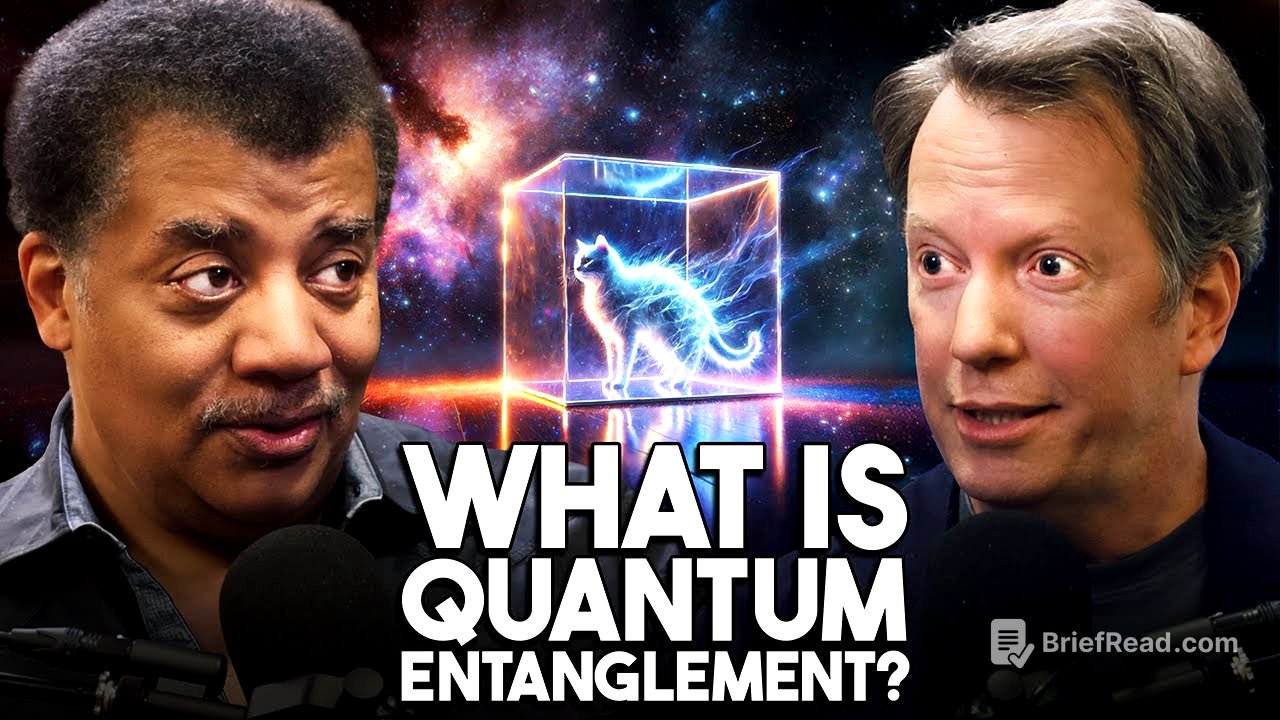TLDR;
This episode explores the concept of quantum entanglement, explaining how particles become linked and how observing one affects the other. It uses Schrödinger's cat thought experiment to illustrate superposition and entanglement with the environment. The discussion transitions to the Copenhagen interpretation of quantum mechanics and contrasts it with the Many Worlds interpretation, which suggests that all possible outcomes exist in separate, non-interacting worlds.
- Quantum entanglement links particles, affecting their states when one is observed.
- Schrödinger's cat illustrates superposition and environmental entanglement.
- The Many Worlds interpretation posits that all quantum possibilities exist in separate realities.
Entangled Particles [0:00]
Quantum entanglement is explained through the concept of a single wave function governing all particles in the universe. When a Higgs Boson decays into an electron and a positron, they initially travel in all directions, described by spherical wave functions. Observing one particle instantly defines its state and, due to momentum conservation, determines the state of the other entangled particle, regardless of the distance between them. This entanglement arises from the fundamental laws of physics, specifically quantum mechanics.
Schrödinger's Cat [2:03]
Entanglement can occur when previously unentangled objects interact, with their interactions varying based on their wave functions. Schrödinger's cat experiment illustrates this, where a cat is placed in a box in a superposition of being awake and asleep. The environment within the box, including air and light, interacts differently with the awake versus the sleeping cat, causing the environment to become entangled with the cat's state. The original thought experiment involves a radioactive substance, a Geiger counter, a hammer, and sleeping gas, leading the cat to be in a superposition of alive and dead based on whether the radioactive particle decays.
Copenhagen Interpretation [5:26]
Schrödinger introduced his cat experiment to challenge the Copenhagen interpretation of quantum mechanics, which suggests that observation causes a quantum system to collapse from a superposition of states into a single, definite state. Schrödinger disagreed with Neils Bohr's view that the cat's state changes only when the box is opened and observed. Hugh Everett later proposed the Many Worlds interpretation, suggesting that all possibilities exist simultaneously in separate worlds, with the observer also entering a superposition of having seen different outcomes.
Many Worlds Interpretation [7:22]
The Copenhagen interpretation frustrated scientists like Einstein and Schrödinger because it seemed to abandon realism, the idea that a physical world exists independently of observation. Everett's Many Worlds interpretation aligns with their desire for a real, objective reality by proposing that all quantum superpositions are real and exist in separate, non-interacting worlds. In the context of Schrödinger's cat, this means there are separate worlds where the cat is either awake or asleep as soon as the cat becomes entangled with its environment, and these worlds are not located in space but rather define the space within them.









